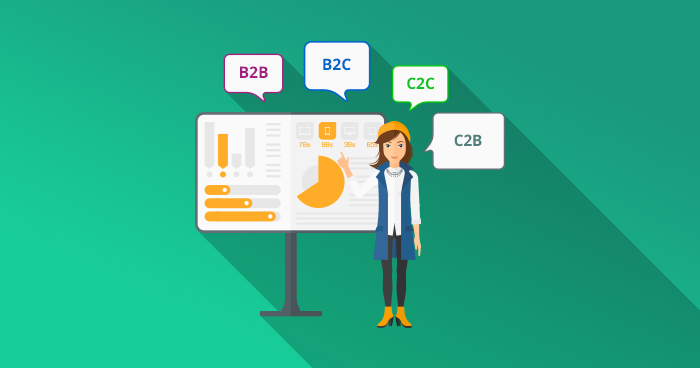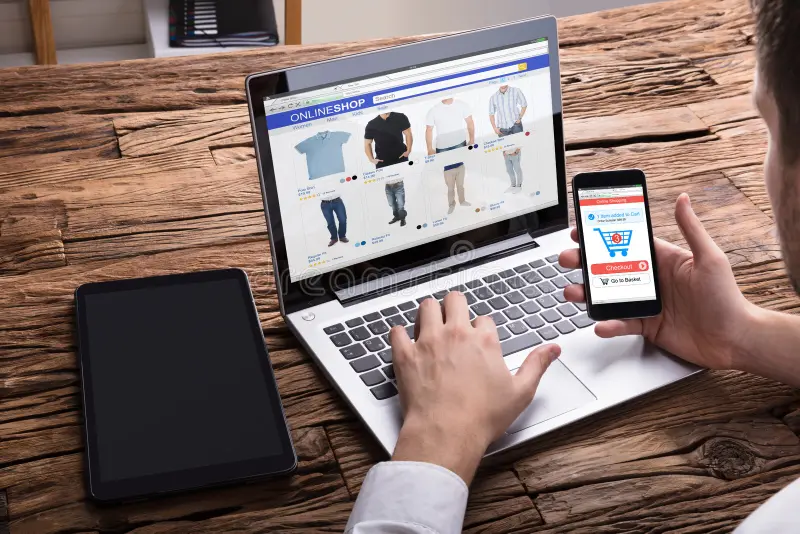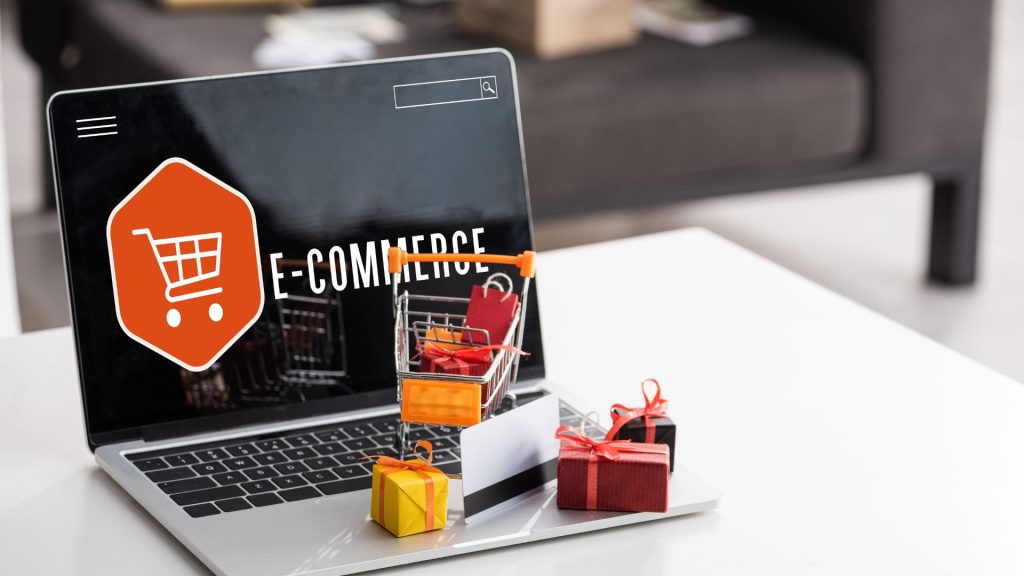Last Updated on February 17, 2024 by Richard Martin Linga
Thinking about starting an e-commerce business in the Philippines? You’re on the right path. The digital market here is booming. So, it’s a great time to jump in. First, you need a plan. This guide will show you how. We’ll keep things simple. No hard words, just easy steps.
In the Philippines, e-commerce offers vast opportunities. Why? More people shop online now. Also, it’s convenient. You can sell to anyone, anywhere in the country, without a physical store. Therefore, starting an ecommerce business here is a smart move. But how do you start? It’s not just about having products to sell. You also need to think about your website, marketing, and, above all, understanding your customers.
This journey might seem tough at first. After that, though, you’ll find it rewarding. In other words, with the right approach, you can create a successful online business. For instance, focus on what Filipinos need and want. Then, offer them exactly that. So, let’s dive into how to start an ecommerce business in the Philippines. We’ll guide you through each step, making sure you’re ready to launch your venture in this exciting market.
Best Ecommerce Platforms in the Philippines

Starting an e-commerce business in the Philippines is exciting. First, though, you need the right platform. This choice is crucial. It’s like picking the location for a physical store but online. The platform you choose affects everything. From how you sell to what your store can do. So, let’s look at the best options available in the Philippines.
Shopify
Shopify stands out for its ease of use. It’s perfect if you’re just starting out. Why? Because it makes things simple. Setting up your store is straightforward. Also, you get lots of tools to help you sell. Plus, Shopify in the Philippines handles the tech stuff. Therefore, you can focus on your products and customers.
Lazada and Shopee
For local reach, Lazada and Shopee are top picks. They’re popular in the Philippines. So, your store gets instant visibility. In addition, they offer tools tailored for Filipinos. After that, selling online becomes smoother. These platforms understand the local market. In other words, they’re a great choice if you’re targeting Filipino shoppers.
WooCommerce
WooCommerce is for those who love control. It works with WordPress. This means you can customize a lot. It’s a bit more technical. But, the effort is worth it. You get a store that truly matches your brand. Also, there are no platform fees. Therefore, it’s cost-effective in the long run.
Magento
Magento is ideal for scaling. If you plan to grow big, consider this platform. It’s powerful and flexible. However, it’s also complex. You might need a developer. But, with Magento, the sky’s the limit. You can expand your store as much as you want.
Wix Ecommerce
Wix is known for simplicity. It’s user-friendly. So, setting up your store is easy. Plus, it offers beautiful design options. This is great for creating an appealing online store. Wix is less about complex features. Instead, it focuses on giving you a good start.
Starting an e-commerce business in the Philippines means choosing the right platform first. Each option has its strengths. Shopify is easy, while Lazada and Shopee connect you with local shoppers. WooCommerce offers control, Magento is for growing, and Wix keeps things simple. Therefore, think about what you need. Above all, choose a platform that fits your business goals. This is your first step to success in the e-commerce world.
Types of Ecommerce Business Models

Starting an e-commerce business in the Philippines? It’s key to pick the right model. Your choice shapes how you sell, what you offer, and who you target. Let’s dive into the main types, making each easy to understand.
B2C: Direct to Consumer
The B2C model is what most think of when it comes to e-commerce. It’s selling products directly to consumers. Simple, right? For instance, you have an online store that sells handmade bags. People visit your site and buy them. It’s straightforward and popular in the Philippines due to its simplicity and direct connection with customers.
B2B: Business to Business
B2B means selling products or services to other businesses. It’s about bulk orders and long-term contracts. Imagine you produce coffee beans. In a B2B model, you might sell them to cafés and restaurants. This model requires understanding other businesses’ needs. Therefore, it’s a bit more complex but very rewarding.
C2C: Consumer to Consumer
Platforms like OLX or Facebook Marketplace highlight the C2C model. Here, people sell to other people. Got an old guitar? Sell it online. C2C is great because it’s flexible. Plus, it’s growing fast in the Philippines. After that, anyone can be a seller, making it a very inclusive model.
Dropshipping
Dropshipping in the Philippines is unique. You sell products but don’t keep them in stock. Instead, when someone orders from you, the supplier ships it directly to them. So, you’re the middleman. This model is appealing because it’s low risk. You don’t need a big investment to start. Therefore, it’s perfect for those new to e-commerce in the Philippines.
Subscription Services: Regular Deliveries
Subscription services are about convenience. Customers pay to get products or services regularly. For example, a monthly box of snacks. It’s a model that builds loyalty. Also, it ensures steady income. Therefore, it’s attractive for businesses that offer consumable products or ongoing services.
Choosing your e-commerce business model is a crucial first step in the Philippines. Each model has its benefits. B2C is direct and simple. B2B focuses on bulk sales to other businesses. C2C allows anyone to sell easily. Dropshipping minimizes risk. Subscription services create loyal customers. So, think about what suits your goals and start your ecommerce journey. Above all, understanding these models is your foundation for success.
How to Start an Ecommerce Business in the Philippines?

Step 1: Research and Planning
Before anything else, research is key. Understand the market. What do Filipinos need? What do they want to buy online? This step is crucial. It guides you in what to sell. Also, look at your competition. What can you offer that’s different? Make a plan. This is your roadmap. It shows where you want to go and how to get there.
Step 2: Legal Requirements
Next, let’s talk about paperwork. Starting an e-commerce business in the Philippines means registering your business. Choose between sole proprietorship, partnership, or corporation. Each has its own process. So, pick what fits your vision. After that, get your business permits. This includes barangay clearance and BIR registration. It sounds complex, but it’s just a few steps. Therefore, it’s important not to skip this part.
Step 3: Building Your Online Store
Now, for the fun part. Creating your online store. First, choose a platform like Shopify. There are many options, as we discussed before. Pick one that matches your needs. Then, design your site. Make it appealing. Also, ensure it’s user-friendly. Remember, your website is your store. So, it should look good and work well.
Step 4: Setting Up Payment and Shipping
After your store is up, set up payment options. Filipinos use various payment methods. Include as many as possible. This makes buying easy. Also, plan your shipping. Partner with reliable couriers. Make sure your products can reach your customers safely and on time.
Step 5: Marketing Your Business
You’re almost there. Now, you need customers. Marketing is how you attract them. Use social media. It’s powerful and cost-effective. Also, consider email marketing. It’s direct and personal. SEO is another tool. It helps people find you online. Therefore, invest time in marketing. It’s essential for your success.
Step 6: Launch and Learn
Finally, launch your store. But, your work doesn’t stop there. After that, listen to your customers. What feedback do they give? Use it to improve. E-commerce is fast-paced. So, always be ready to adapt. This way, you keep growing.
Starting an e-commerce business in the Philippines is an adventure. It’s not always easy. But, it’s rewarding. Follow these steps to begin. Research, register, build your store, set up payments and shipping, market, and launch. Also, remember to learn and adapt. Above all, believe in your business. With hard work and dedication, you can succeed.
Pros & Cons of Starting an Ecommerce Business

Pros
Wider Market Reach
The internet knows no bounds. So, starting an e-commerce business in the Philippines means you can reach customers far and wide. Unlike a physical store, your online shop is open to anyone with internet access. This is a big plus.
Lower Operating Costs
Running an online store costs less than a traditional one. No need for a big, expensive physical space. Also, you can manage your business from anywhere. This means saving money on rent, utilities, and more.
Open 24/7
Your e-commerce store doesn’t close. It’s open all day, every day. This means customers can shop whenever they want. So, you can make sales even while you sleep. It’s a significant advantage over physical stores.
Cons
Competition is Tough
The e-commerce space is crowded. Many businesses sell online. Therefore, standing out is a challenge. You need a solid strategy to attract and retain customers in such a competitive market.
Logistical Hurdles
Shipping can be tricky. Getting products to customers across the Philippines involves planning. Delays and damages during shipping can lead to unhappy customers. So, reliable logistics are crucial.
Technical Issues
Running an online store requires some tech knowledge. Websites crash. Payment systems fail. These problems can turn customers away. Therefore, being prepared to deal with technical issues is important.
Starting an e-commerce business in the Philippines comes with its set of highs and lows. On one hand, the potential for growth and savings is enormous. On the other, competition and operational challenges present real hurdles.
Embarking on an e-commerce venture in the Philippines is an exciting prospect. It offers a path to reach more customers and operate more flexibly. However, it’s not without its challenges. Competition is fierce, logistical and technical issues can arise. But with careful planning and resilience, the benefits can outweigh the drawbacks. Above all, understanding these pros and cons is the first step towards building a successful online business.
Tips for When You Start an Ecommerce Business in the Philippines

Know Your Market
Understanding your audience is key. What do Filipinos need? What do they love to buy online? Research helps you find answers. So, dive deep into market trends. This knowledge shapes your product offerings and marketing strategies.
Choose the Right Platform
Your e-commerce platform is your store’s foundation. Options like Shopify, Lazada, or WooCommerce are popular in the Philippines. Each has its pros and cons. Therefore, pick one that suits your business needs and budget.
Stay Legal
Register your business. It’s crucial. This step makes your venture official in the Philippines. It involves paperwork, yes. But it protects you and your customers. So, don’t skip it.
Optimize Your Website
A user-friendly website is vital. It should load fast and look good on mobile devices. Also, ensure easy navigation. This means customers find what they need quickly. Therefore, invest in good website design.
Offer Multiple Payment Options
Filipinos use various payment methods. Cash on delivery, credit cards, and e-wallets are popular. Offering multiple options makes purchasing easier. So, set up a system that accommodates different payment methods.
Plan Your Logistics
Shipping is a big deal in e-commerce. Partner with reliable couriers. Offer tracking. This way, customers know when to expect their orders. Also, consider shipping costs. They impact your pricing and customer satisfaction.
Market Your Business
Spread the word. Use social media, SEO, and email marketing. These tools help you reach more people. Also, consider promotions and discounts. They attract first-time buyers. Therefore, have a solid marketing plan.
Provide Excellent Customer Service
Happy customers are loyal customers. Answer queries quickly. Handle complaints well. Also, make returns easy. Good service builds trust. Therefore, prioritize customer satisfaction.
Learn and Adapt
E-commerce evolves fast. Stay updated on trends. Listen to your customers. Their feedback helps you improve. So, be open to change. It’s key to growing your business in the Philippines.
Starting an e-commerce business in the Philippines is a journey filled with opportunities and challenges. Following these tips can set you on the path to success. Know your market, choose the right platform, stay legal, and focus on customer experience. Also, remember that learning and adapting are part of the process. Above all, believe in your venture. With dedication and hard work, you can build a thriving e-commerce business.
Conclusion
Embarking on an e-commerce venture in the Philippines is both exciting and challenging. It’s a journey that demands research, planning, and dedication. But, the rewards can be great. By understanding your market, choosing the right platform, and focusing on customer satisfaction, you set the stage for success. Remember, it’s also about learning and adapting. The digital landscape changes quickly, so staying informed and responsive to your customers’ needs is key. Therefore, if you’re looking to start an e-commerce business in the Philippines, take these insights to heart. With hard work and a strategic approach, you can build a thriving online business. Above all, believe in your vision and take that first step today.
